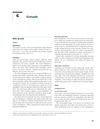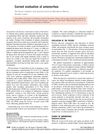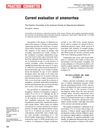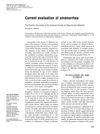A 14-Year-Old Female with Primary Amenorrhea
April 2020
in “
Journal of the Endocrine Society
”
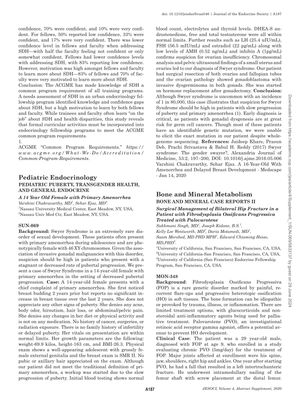
TLDR A 14-year-old girl with no menstrual period was diagnosed with Swyer Syndrome and treated for a related cancer risk.
A 14-year-old female with primary amenorrhea and a history of stagnant pubertal development was diagnosed with Swyer Syndrome, a rare disorder characterized by a 46 XY karyotype in phenotypically female individuals. Despite not meeting the traditional definition of primary amenorrhea, the patient's slow pubertal progression prompted a medical workup. Blood tests revealed normal levels of DHEA-S, androstenedione, free and total testosterone, but elevated levels of LH (25.4 uIU/mL) and FSH (56.5 mIU/mL), low estradiol (22 pg/mL), AMH (0.52 ng/mL), and inhibin A (1pg/mL), indicating ovarian insufficiency. Chromosomal analysis and pelvic ultrasound confirmed the diagnosis of Swyer Syndrome, showing a small uterus and ovaries. The patient underwent surgical resection of both ovaries and fallopian tubes, revealing gonadoblastoma with invasive dysgerminoma. Post-surgery, she started hormone replacement therapy. This case underscores the importance of considering Swyer Syndrome in patients with primary amenorrhea and slow pubertal progression, due to the high risk of germ cell cancers associated with the condition. Despite whole-genome sequencing, the specific genetic mutation in this patient was not identified.
